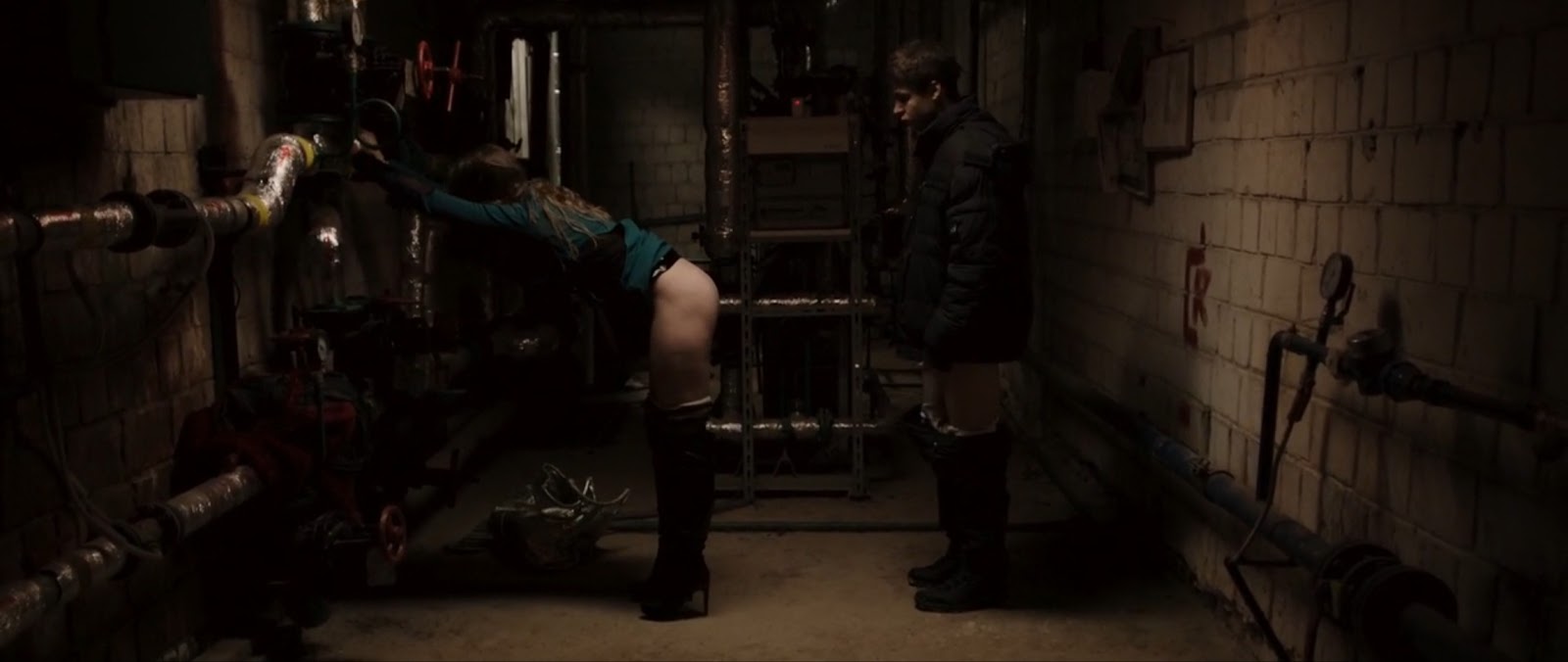June 9th, 2023
By Dylan Pelgrims

The film opens with a bold statement: it’s entirely in sign language, with no subtitles, translation, or voice-over. It’s not just an intriguing choice—it feels deeply honest, even radical in its authenticity. The absence of a film score removes the usual emotional cues, leaving scenes raw and immersive. What remains is ambient sound—the creak of a door, footsteps in a hallway—which only heightens the realism and pulls you in more viscerally.
We follow a young student on his way to a boarding school for the deaf, somewhere in Ukraine. When he arrives, the opening ceremony is already over—students and staff have moved inside. He hands a slip of paper to the principal. From this moment on, the film opens up into a space of interpretation. Without spoken language or translation, each viewer begins to experience their own version of events. For those who understand sign language, there’s perhaps a clearer narrative. But for the rest of us, the ambiguity isn’t a limitation—it’s part of the film’s strange power. It invites you to observe more closely, to read gestures, silences, and body language like clues. That uncertainty, that gap between knowing and guessing, becomes part of the film’s unique thrill.
Our protagonist is introduced to his new classmates, and it’s immediately clear that what governs this world isn’t order—but survival. Jungle law rules these halls.
The school is adapted to the needs of its deaf students. There’s no ringing bell; instead, a flickering lamp above the chalkboard signals the end of class—one of many subtle, tactile details that shape this self-contained universe.
The boarding school exists as a kind of microcosm: closed off, self-regulating, with its own strict hierarchy and unwritten codes. Our protagonist earns his place through a clumsy, almost balletic fight scene—a rite of passage rather than a moment of triumph.
The English title, The Tribe, hints at what we’re being allowed to witness: a world operating by its own laws, rarely interrupted by authority. Adults are almost entirely absent. These kids run the place. What unfolds is bleak, often brutal—a coming-of-age in a crumbling institution, where graffiti scars every wall and the peeling paint seems to echo a larger neglect. It’s not just physical decay—it’s moral abandonment.
The girls in The Tribe serve one brutal purpose: to sell their bodies for money. Our protagonist soon assumes the role of pimp, and in a particularly disturbing scene, after watching one of the girls with a truck driver, he pays her and insists on the same transaction. The girls are denied any meaningful character arc—they exist to comply with the demands of the boys, and to suffer the consequences.
One scene in particular leaves a lasting scar: an abortion sequence so unflinching, so viscerally raw, that it eclipses even the infamous scene from 4 Months, 3 Weeks and 2 Days. It’s devastating, not just in what it depicts but in how it reinforces the film’s hopeless, nihilistic atmosphere. And yet, for all its intensity, it adds little in the way of development for the girl involved—her pain remains a symbol more than a story.
Still, one moment breaks through the bleakness: a ferocious argument between the two main female characters, conducted entirely in sign language in the privacy of their dorm. It’s a breathtakingly cinematic scene—raw, expressive, and hypnotic. The physicality of sign language becomes a kind of choreography, charged with emotion and tension. You get the sense it could’ve gone on for twenty more minutes, and it still wouldn’t have lost its power.
The film unfolds in just 34 meticulously choreographed shots. You might not notice this immediately—thanks to the handheld camera’s fluidity and subtle repositioning within each long take—but every frame is carefully composed, visually rich, and precise. It’s a feat of technical preparation, yet it never feels over-rehearsed.
And while the rawness of many scenes is undeniable, the director, Myroslav Slaboshpytskyi, seems less concerned with authenticity than with crafting a genre piece. He brings the tropes of the crime film into an unexpected, original setting—and in that regard, the experiment works. But when viewed through the lens of the subject matter, it feels like a missed opportunity. What could have been a piercing, empathetic portrait of life inside a boarding school for the deaf is instead absorbed into stylized violence and bleak sensationalism.
The most compelling film buried within this one would have explored the day-to-day lives, the quiet frustrations and small victories of these students. As a crime film, it occasionally falters. The fight scenes, for example, lack the visceral impact they aim for—except for one jarring moment in which our protagonist is slapped repeatedly in the face, and of course, the film’s ending, which flirts with full-blown Tarantino-esque spectacle.
The setting—a neglected boarding school—is such fertile ground. The cast, many of whom are non-professional actors, rise to the occasion with emotionally charged, physically expressive performances. There’s real talent on screen. There’s material here for something extraordinary.
But ultimately, it feels like the film settled too early. Slaboshpytskyi had gold in his hands—and just didn’t dig deep enough.
There are multiple boarding schools for the deaf across Ukraine—in Luhansk, in Zaporizhzhia Oblast—and heartbreakingly, one in Kyiv that was bombed in recent attacks. These institutions, and the young lives inside them, deserve not just visibility, but nuance, care, and depth in the stories we tell.
The film will stay with you. That’s an apt criterion of a film’s value. But it could’ve been much more. Nevertheless, despite all its flaws, it remains a must-see film with courageous performances by the young actors and beautiful camerawork that invites you in and holds you hostage in an increasingly grim nightmare.